
Green Snake Facts. Only two species of green snake exist, known commonly as the rough and the smooth green snake. Five subspecies of green snakes exist, and all are distinguishable by their characteristic bright green color that allows them to easily blend into grass and other vegetation, protecting them from predators and even human detection.
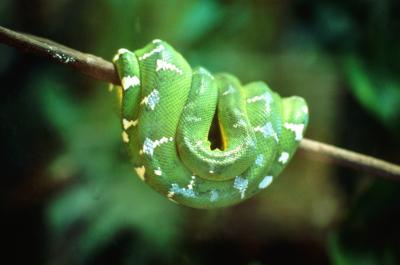
Both rough and smooth green snakes are bright green in color but distinguishable by the colors of their underbellies. Rough green snakes have yellow bellies, while smooth green snakes have ivory bellies and white throats. Young of both types of green snakes start out at different colors from adults. Young rough green snakes are gray or pale green in color, while young smooth green snakes are darker green than the adults. Rough green snakes eventually grow larger than smooth green snakes, reaching lengths as long as 33 inches, while smooth green snakes average around 20 inches in length. Another physical characteristic that differentiates the two types of snakes is the texture of the snake’s scales; the rough snake's scales angle outward, while the smooth snake has scales that set into the skin, making them smooth in texture.
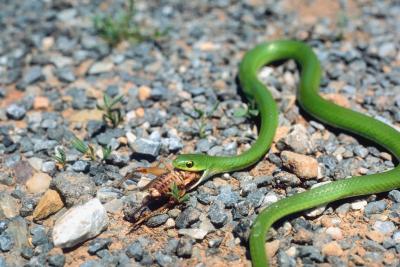
Both the rough and smooth species of green snake survive on a diet of insects and spiders. Insects they commonly consume include caterpillars, moths, crickets and grasshoppers. They track prey using their tongues to detect scents of prey and can even capture prey flying through the air. Green snakes of both species hunt during daylight hours and rest at night.
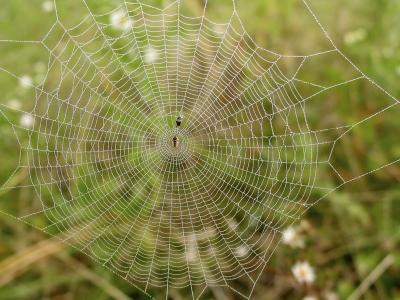
Many other animals prey on green snakes, so the green snake must use his bright color as camouflage and stay near green plants like grass and other vegetation in order to hide from predatory animals. Animals that commonly feed on green snakes include other snakes, birds and many mammals.
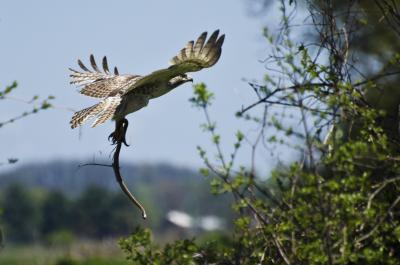
The rough green snake makes its home in areas of dense vegetation located near water, areas that receive lots of sun and have low brush the snake can hide in. Rough green snakes are found in the Eastern United States between Connecticut and Florida, in the Gulf states and states within the Mississippi Valley, between Kansas, Ohio and Illinois. Smooth green snakes are found within the same areas; they prefer to live in habitats with thick ground cover such as fields, bogs, edges of marshes, wet meadows and open woodland.
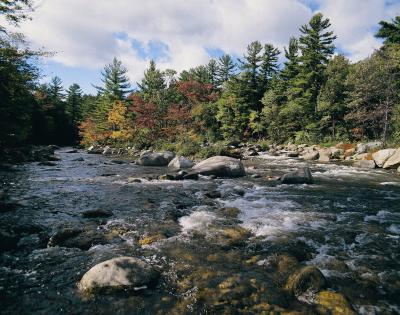
Both rough and smooth green snakes lay leathery eggs that produce the green snake young. Mating occurs in the late spring or through the summer, and eggs are typically laid between the months of June and September. Rough and smooth snakes lay between 4 and 12 eggs at a time under logs and stones, in rodent burrows or piles of sawdust or within mounds of rotting vegetation. The infant snakes hatch between 4 and 23 days after they are laid.
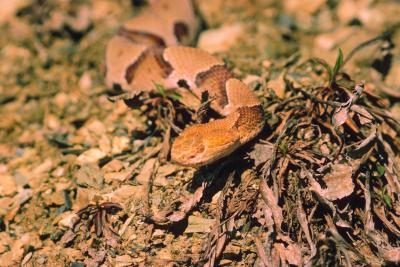 Snakes Common to Houston
Snakes Common to Houston
Snakes Common
Snakes Common to Houston
Snakes Common to Houston
Snakes Common
 Green Snake Facts
Green Snake Facts
Green Snake Facts. O
Green Snake Facts
Green Snake Facts
Green Snake Facts. O
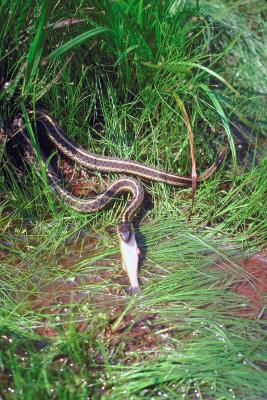 Common Snakes Found in a Virginia Pond
Common Snakes Found in a Virginia Pond
Common Snakes Found in a Virginia Pond
Common Snakes Found in a Virginia Pond
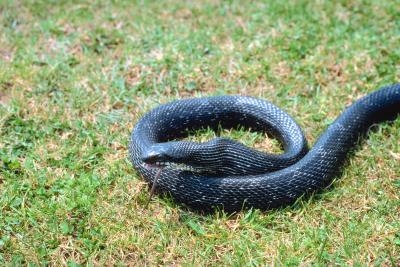 Types of Snake Species in Michigan
Types of Snake Species in Michigan
Typ
Types of Snake Species in Michigan
Types of Snake Species in Michigan
Typ
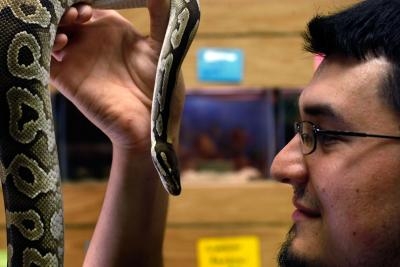 How to Know If a Ball Python Is a Boy or Girl
How to Know If a Ball Python Is a Boy or Girl
How to Know If a Ball Python Is a Boy or Girl
How to Know If a Ball Python Is a Boy or Girl
Copyright © 2005-2016 Pet Information All Rights Reserved
Contact us: www162date@outlook.com